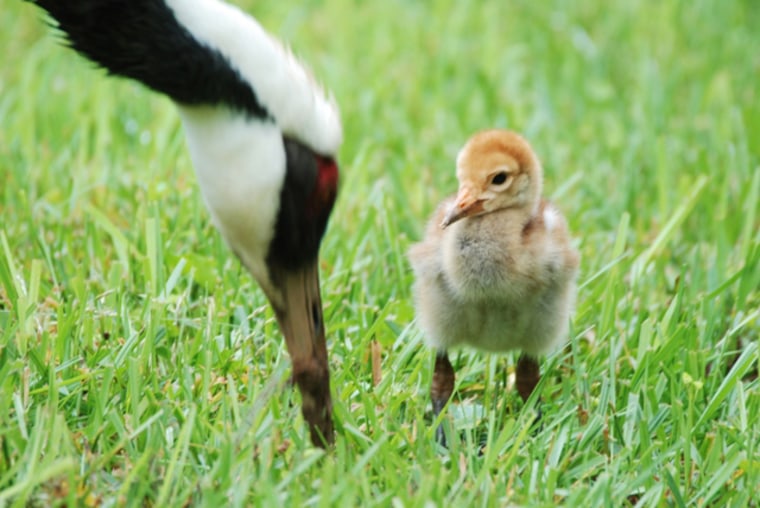When the National Zoo tried to set up a pair of rare white-naped cranes, the date went sour and the lovebirds fought.
However, science came to the rescue where romance failed. Staff at the zoo's Conservation and Research Center in Front Royal artificially inseminated the female crane. A female chick was born last month in what the zoo calls an important step for the threatened species.
The population of white-naped cranes in the wild has fallen to an estimated 5,000 because of the destruction of their native wetland habitat in northeast China. As with other endangered species, zoos are trying to maintain a healthy population in captivity in case the cranes need to be reintroduced into the wild. A coordinated breeding program, known as the Species Survival Plan, ensures the birds aren't inbred.
As part of the program, a 20-year-old female crane was paired with a male determined to be a good match. But the female had become attached to humans at an early age and didn't know how to do the dancing, unison calling, stick tossing and other rituals that are part of crane courtship, said animal keeper Warren Lynch.
"The male ended up beating her up," Lynch said. "He wanted to breed, but she wasn't giving him the proper cues."
Another keeper was able to gain the female's trust and artificially inseminate her without using anesthesia or restraints, which are risky for animals.
A few weeks later, the female laid a fertile egg. The breeding program was in dire need of more females, and Lynch was able to determine the chick was female before it hatched. The baby hatched May 23 and was placed in "foster care" with her father's parents because the mother wasn't paired with a male.
"Cranes actually are really good parents, but it requires both of them," Lynch said.
